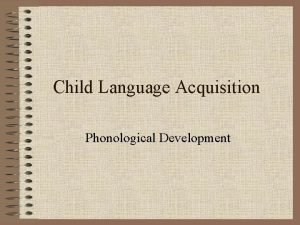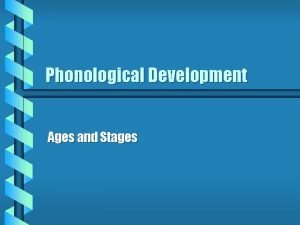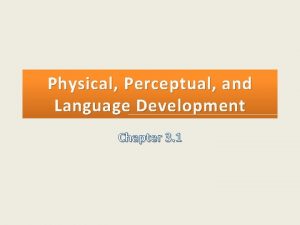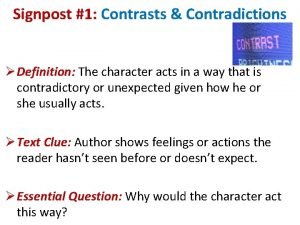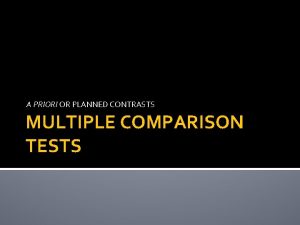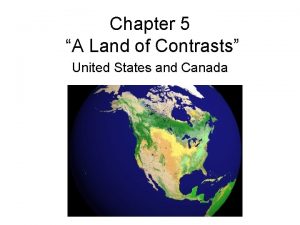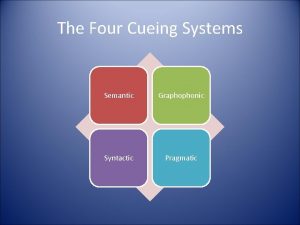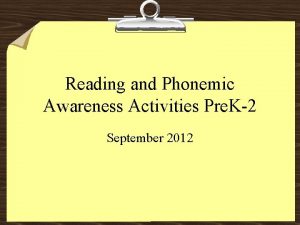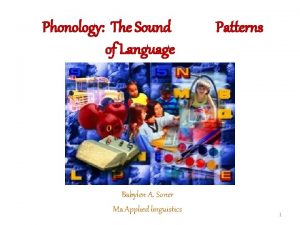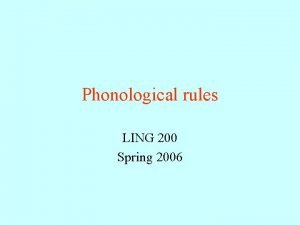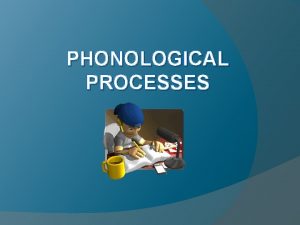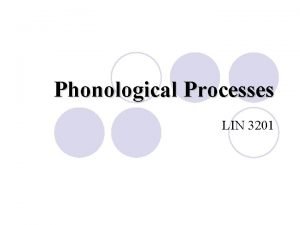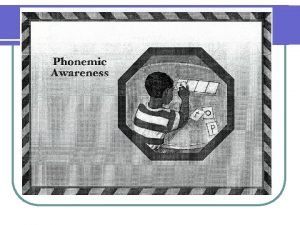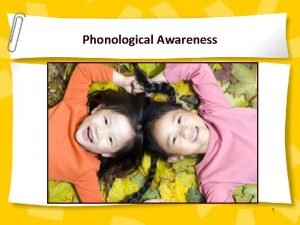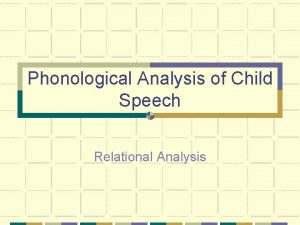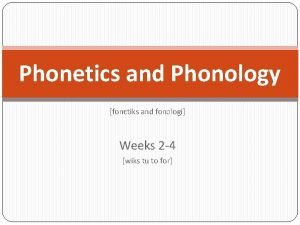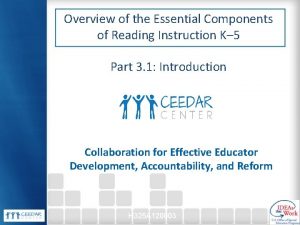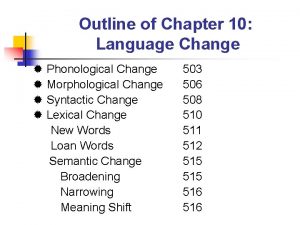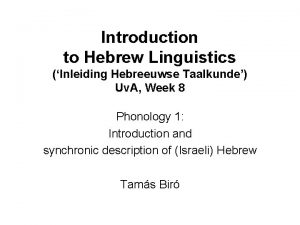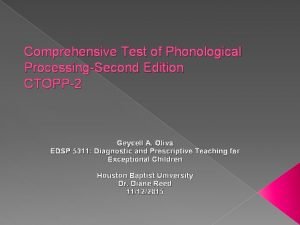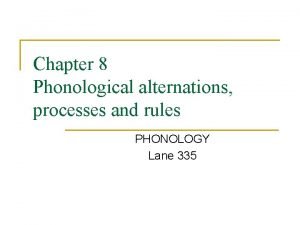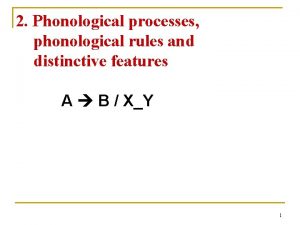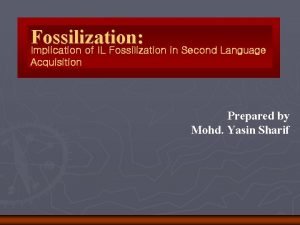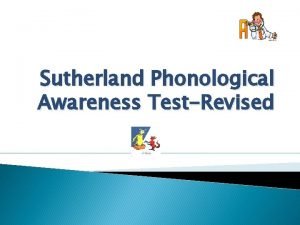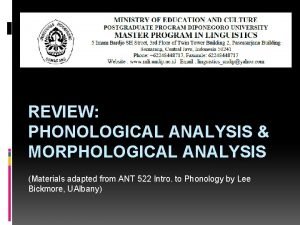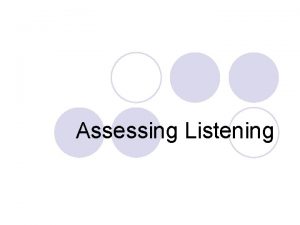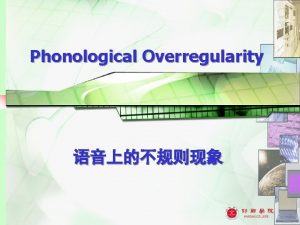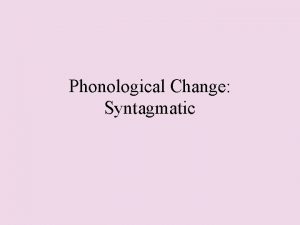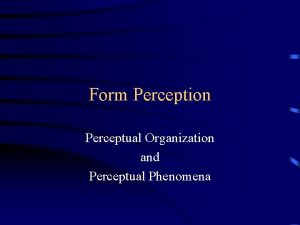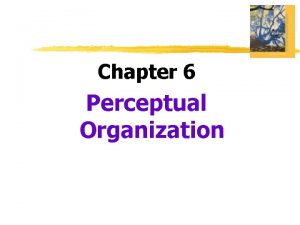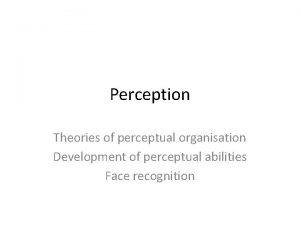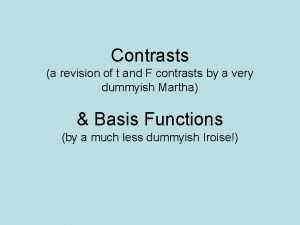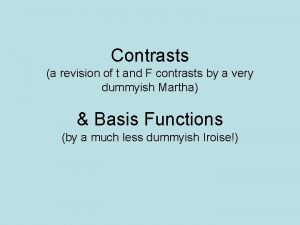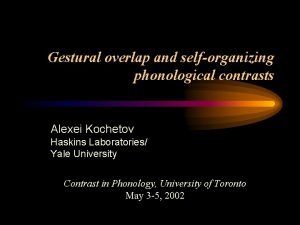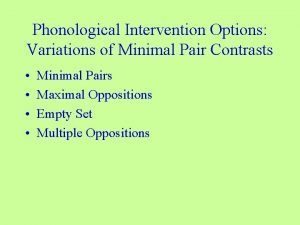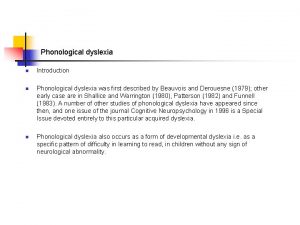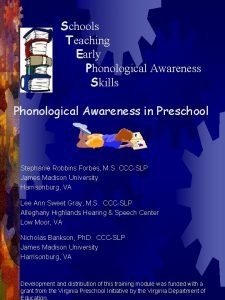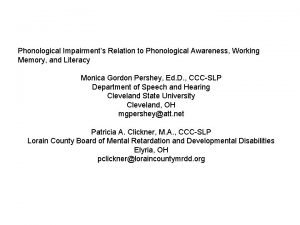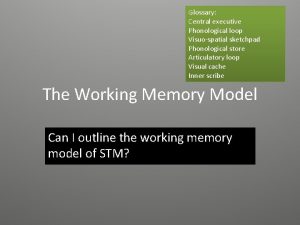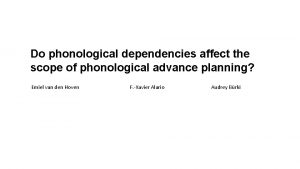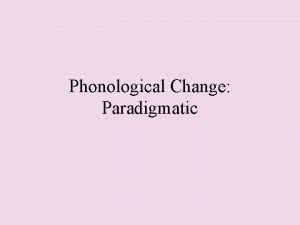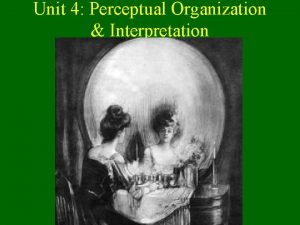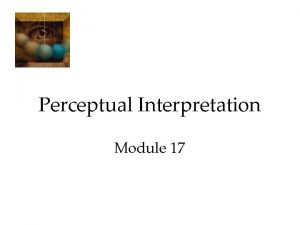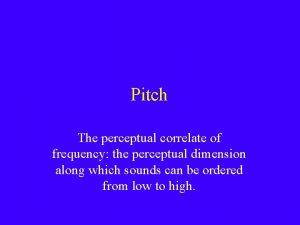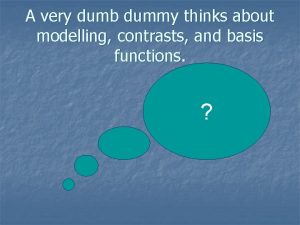Modelling the perceptual development of phonological contrasts with






![Do Elspeth and Liz perceive [350 Hz, 80 ms] as “ship” or as “sheep”? Do Elspeth and Liz perceive [350 Hz, 80 ms] as “ship” or as “sheep”?](https://slidetodoc.com/presentation_image_h2/f9c0952de2b7c90769726e756e44fa39/image-7.jpg)

![How Elspeth and Liz perceive the segments reliably [350 Hz, 350 Hz 80 ms] How Elspeth and Liz perceive the segments reliably [350 Hz, 350 Hz 80 ms]](https://slidetodoc.com/presentation_image_h2/f9c0952de2b7c90769726e756e44fa39/image-9.jpg)


























- Slides: 35

Modelling the perceptual development of phonological contrasts with OT and Gradual Learning Algorithm Paola Escudero, University of Reading p. r. escudero@reading. ac. uk Paul Boersma, University of Amsterdam paul. boersma@hum. uva. nl 25 th Penn Linguistics Colloquium March 3, 2001

Sound contrasts ¨ Sound contrasts and acoustic information ¨ An example of a sound contrast ¨What are the acoustic differences between the two?

Two acoustic cues to “ship” vs. “sheep”

Elspeth’s production environment (Scottish English)

Liz’s production environment (Southern English)

Elspeth’s and Liz’s average production environments
![Do Elspeth and Liz perceive 350 Hz 80 ms as ship or as sheep Do Elspeth and Liz perceive [350 Hz, 80 ms] as “ship” or as “sheep”?](https://slidetodoc.com/presentation_image_h2/f9c0952de2b7c90769726e756e44fa39/image-7.jpg)
Do Elspeth and Liz perceive [350 Hz, 80 ms] as “ship” or as “sheep”? Liz Elspeth

Why using the nearest production prototype in perception? ¨ Answer: “likelihood maximisation”: choose the most likely produced category, given a certain F 1 & duration “minimise the probability of perceptual confusion” ¨ Functional principle:
![How Elspeth and Liz perceive the segments reliably 350 Hz 350 Hz 80 ms How Elspeth and Liz perceive the segments reliably [350 Hz, 350 Hz 80 ms]](https://slidetodoc.com/presentation_image_h2/f9c0952de2b7c90769726e756e44fa39/image-9.jpg)
How Elspeth and Liz perceive the segments reliably [350 Hz, 350 Hz 80 ms] not /I/ not /i/ /I/ *! * /i/ * * [350 Hz, 350 Hz 80 ms] not /i/ not /I/ /i/ * *! * *

First stage of babies Elspeth and Liz

How baby Elspeth learns ¨ Little Elspeth makes a mistake when categorising [350 Hz, 80 ms] [350 Hz, 350 Hz 80 ms] not /i/ /I/ /i/ *! * 80 ms not /I/ 350 Hz not /I/ * *

How little Elspeth learns to perceive “ship” and “sheep” reliably (1)

How little Elspeth learns to perceive “ship” and “sheep” reliably (2)

How little Elspeth learns to perceive “ship” and “sheep” reliably (3)

How little Elspeth learns to perceive “ship” and “sheep” reliably (4)

How little Elspeth learns to perceive “ship” and “sheep” reliably (5)

How little Elspeth learns to perceive “ship” and “sheep” reliably (6)

How little Liz learns to perceive “ship” and “sheep” reliably (1)

How little Liz learns to perceive “ship” and “sheep” reliably (2)

How little Liz learns to perceive “ship” and “sheep” reliably (3)

How little Liz learns to perceive “ship” and “sheep” reliably (4)

How little Liz learns to perceive “ship” and “sheep” reliably (5)

How little Liz learns to perceive “ship” and “sheep” reliably (6)

The perception of real adult Elspeth and Liz

What about L 1 -Spanish Isabel, who moves to Scotland then to Southern England?

Isabel’s production environment (Spanish)

Isabel’s adult perception (Spanish)

Isabel’s new production environment (Scottish English)

How Isabel learns to perceive “ship” and “sheep”

Isabel’s new production environment (Southern English)

How Isabel learns to perceive “ship” and “sheep”

Three types of real L 2 categorisation Spectral reliance only Cue integration Duration reliance only

Summary ¨ For our perception model, we assumed: 1) Perception is handled by an OT grammar 2) Its acquisition is handled by the GLA 3) L 2 learners start by copying their L 1 grammar ¨ With these assumptions, we can model: 1) L 1 Scottish and Southern English 2) L 2 Scottish and Southern English, partially

Conclusion ¨ Cue reliance depends on cue reliability, or a) Differences in the production environment account for differences in perception. b) Changes in the production environment lead to changes in perception. ¨ The functional principle underlying this production-perception dependence is “minimisation of perceptual confusion”. ¨ This functional principle follows from our formal modelling of the perception grammar.

Thank you for your attention!
 Berko and brown fish
Berko and brown fish Phonological development stages
Phonological development stages Physical perceptual and language development
Physical perceptual and language development Physical perceptual and language development
Physical perceptual and language development Contrasts and contradictions meaning
Contrasts and contradictions meaning Nonfiction contrast and contradictions examples
Nonfiction contrast and contradictions examples Dramatic irony
Dramatic irony Planned comparisons example
Planned comparisons example Contrasts and contradictions signpost
Contrasts and contradictions signpost Monadnocks/uwharries
Monadnocks/uwharries Chapter 5 a land of contrasts
Chapter 5 a land of contrasts Planned contrasts spss
Planned contrasts spss Levels of phonological ambiguity
Levels of phonological ambiguity Pragmatic cueing system
Pragmatic cueing system Phonological loop
Phonological loop Phoneme substitution
Phoneme substitution Phonological loop
Phonological loop Aspiration in phonetics
Aspiration in phonetics Onset coda and nucleus
Onset coda and nucleus Ejective
Ejective Morphonemics
Morphonemics Vowel phonological processes
Vowel phonological processes Phonological continuum
Phonological continuum Phonemic awareness continuum
Phonemic awareness continuum Phonological process analysis
Phonological process analysis Assimilation in phonetics
Assimilation in phonetics Phonological continuum
Phonological continuum Old english vs modern english
Old english vs modern english Vowel phonological processes
Vowel phonological processes Ctopp-2 interpretation scores
Ctopp-2 interpretation scores Phonology process
Phonology process Dentalization phonological process
Dentalization phonological process Site:slidetodoc.com
Site:slidetodoc.com Sutherland phonological awareness test
Sutherland phonological awareness test Phonological analysis example
Phonological analysis example Communicative stimulus-response tasks
Communicative stimulus-response tasks
